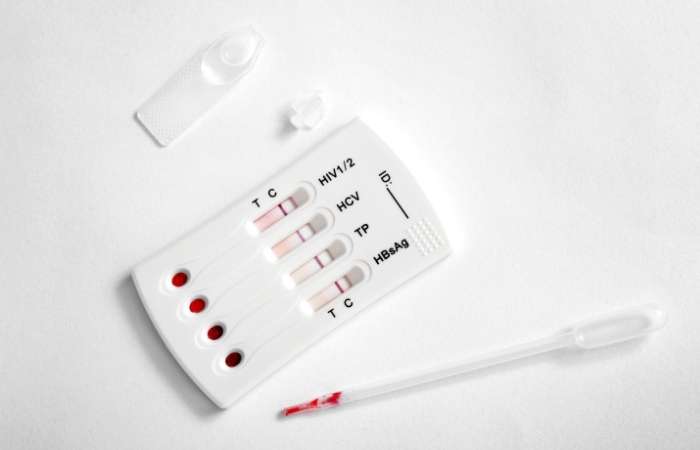The Numbers Don’t Lie Why Non-Sex Workers Often Have Higher Undiagnosed STD Rates
Quick Answer: Over 50% of Irish young adults have never tested for STIs, mainly due to stigma, privacy fears, and emotional avoidance. At-home STD kits offer a private, accessible solution that removes these barriers and helps normalize testing worldwide.
It Started with a Statistic: Ireland’s Surprising Testing Gap
It was shocking data that the Health Service Executive reported in November 2025: 55% of young adults between 18 and 30 had never tested for a sexually transmitted infection, even though they represented more than half of cases in the country.
Let that sink in. In a country with free home test kits, free sexual health services, and ongoing public health campaigns, the majority of sexually active young people are skipping testing altogether.
The HSE report also revealed the mental roadblocks behind this avoidance:
Table 1. Core psychological barriers to STI testing reported by Irish young adults (source: HSE 2025)
Even with free, confidential options, the emotional weight of STI testing remains heavy. Shame. Fear. Avoidance. These aren’t just feelings, they’re public health risks.
Sexually Active ≠ Sexually Informed
Let’s talk truth. Most STIs don’t come with flashing neon signs. Chlamydia, one of the most common STIs worldwide, is symptomless in up to 70% of women and 50% of men. Gonorrhea can be just as quiet. And Herpes? It can pass without a single sore.
So when people say, “I feel fine, so I must be fine,” they’re playing a game with stacked odds. Ireland’s data is just one chapter in a bigger story: testing isn’t happening, not because people don’t care, but because they don’t know how, or they’re scared to try.
And here’s where at-home testing changes everything.

People are also reading: Not Just a Scare: Why HIV Testing After Anal Sex Could Save Your Life
“I’ve Slept With Five People. Never Got Tested. Until Last Month.”
Danny, 24, grew up in Dublin, moved to Galway for school, and considered himself "responsible." He’d used condoms, talked about boundaries, even asked partners if they’d been tested. But he’d never actually done it himself.
“It was the guilt, honestly. Like if I got tested, I was admitting I’d done something wrong.”
His first time ordering a kit was last month. The HSE home testing site popped up on TikTok. He filled it out, waited three days, and panicked when the plain envelope landed in his mailbox. What if his roommate asked? What if it got lost? What if… it came back positive?
“Negative, thankfully. But now I wish I’d done it sooner. The anxiety was worse than the process.”
Danny’s not rare, he’s the norm. The fear of being “caught out” or “found out” keeps millions from ever taking the test that could protect them, and their partners.
What Makes At-Home STD Testing Different?
At-home STD test kits remove three massive roadblocks: visibility, vulnerability, and logistics.
Unlike clinic visits that require face-to-face interactions or long waits, discreet kits can be ordered online and arrive in plain packaging, no awkward pharmacy counters, no nosy roommates, no scheduling stress. You collect your own sample (urine, blood, or swab depending on the test), mail it in or wait for rapid results at home, and get your outcome via text, email, or secure portal.
And if something’s positive? You’re not left stranded. Quality kits come with follow-up guidance, telehealth referrals, and clear treatment pathways.
STD Test Kits offers FDA-approved options for multiple infections, from Chlamydia to Syphilis, HIV, and more. Fast, private, and doctor-trusted.
Worldwide, the Silence Is Just as Loud
While Ireland gave us numbers, other countries echo the same pattern. In the U.S., CDC data shows that only 12% of sexually active teens are tested for STIs annually. In the UK, a recent NHS report found that testing among 15–24-year-olds dropped significantly post-COVID, despite a surge in chlamydia cases.
Around the world, each day, 1 million cases of STIs are contracted, often symptom-free. Letting this happen can result in infertility, damage, and an elevated risk of HIV, but ‘it won’t happen to me’ and ‘it may violate my privacy’ are two reasons why many remain untreated until it is too late.
This is why the Ireland story matters: it’s not just Irish. It’s universal.
Assumptions vs. Reality: The Dangerous Gap
A lot of people make a quiet equation without even realizing it: "I must be fine if it didn't burn when I peed." Or, "I don't need to test because we used protection." These reasons inside feel safe, but they're based on hope, not facts.
Let's look at the difference between what people think and what really happens:
Table 2. Common testing myths vs. medically verified facts
Should You Retest? Probably Yes
Even one test doesn’t mean you're in the clear forever. If you’re sexually active, especially with new or multiple partners, testing should be part of your regular health routine, just like a dental check or annual physical.
The CDC recommends annual chlamydia and gonorrhea screening for sexually active women under 25, and routine HIV testing for everyone aged 13–64 at least once. But for those who test early after exposure, retesting 3–6 weeks later is often necessary, especially for infections with longer window periods.
Remember, early testing can produce false reassurance. That’s not a failure, it’s just biology. Retesting ensures you’re not missing something time-sensitive.
This Isn’t About Guilt. It’s About Knowing
Let’s cut the shame. Getting tested doesn’t mean you’ve done something wrong. It means you care enough about your body, and your partners, to check in. It means you’re informed. Empowered. Proactive. Testing is healthcare, not a confession.
Whether you’re in Ireland, the U.S., the Philippines, or somewhere off-grid, the equation is the same: If you’re sexually active, you deserve to know your status. Not someday. Today.
Order a discreet STD test kit and give yourself that clarity, without the awkward clinic visit or waiting room nerves.
FAQs
1. I’m not showing any symptoms, do I really need to test?
Yep. And that’s the trap most people fall into. STDs like chlamydia and HPV are pros at flying under the radar. No burn, no bump, no clue, until there's damage. Testing is how you stay in control, not how you find out too late.
2. How would I even bring this up with my partner?
Try this: “Hey, I care about us, and I want us both to be healthy. Wanna test together?” That’s not weird, it’s hot. It shows respect. And if they freak out? That’s a red flag, not a relationship.
3. What if I order a kit and someone sees it?
Kits come in plain packaging, no giant red letters that scream “STD ALERT.” If you’re worried about nosy roommates or parents, ship it to a friend’s house or pick it up at a drop point. Your health, your terms.
4. Do at-home STD tests actually work?
When you buy from a reputable source? Yes. Big yes. The ones from STD Test Kits are FDA-approved, clinically backed, and used by real doctors. Just don’t test too early, timing affects accuracy, no matter how good the test is.
5. What if the results are positive?
Breathe first. Then get a follow-up test from a clinic to confirm. Most STIs are totally treatable. It doesn’t mean you’re dirty. It means you’re responsible and now you’re handling it.
6. Is it gonna hurt?
Nah. Pee in a cup. Swab your mouth. Maybe a finger prick. It’s less painful than the mental spiral of not knowing.
7. I’ve only had oral sex, am I still at risk?
Yes, friend. Gonorrhea, syphilis, and herpes can all be passed through oral. You can catch it without even taking your pants off. Wild, right?
8. How often should I be testing?
If you’re sexually active with new or multiple partners, aim for every 3–6 months. Monogamous? Cool, but still test once a year. And always retest after treatment or a new hookup, even if it seemed low-risk.
9. Does this mean I’ve been irresponsible?
Absolutely not. Most people didn’t get real sex ed. Most were taught shame, not science. Testing isn’t about guilt, it’s about stepping up now. Zero shame. Full credit for showing up.
10. How fast do I get results with a home test?
Some are rapid (results in 15–20 minutes), others require mailing to a lab (1–3 days). Either way, it’s faster than waiting for an appointment, sitting in a clinic, and Googling your symptoms at 2AM.
There’s No Right Time, Just Sooner Than Later
Testing is never going to feel fun. But it can feel empowering. You can do it on your schedule, in your space, without anyone else in your business. Whether you’re reacting to a scare or just ready to stop guessing, at-home STI testing is one of the easiest, smartest choices you can make for your future health.
Don’t wait and wonder, get the clarity you deserve. This at-home combo test kit checks for the most common STDs discreetly and quickly.
How We Sourced This Article: We combined current guidance from leading medical organizations with peer-reviewed research and lived-experience reporting to make this guide practical, compassionate, and accurate. In total, around fifteen references informed the writing; below, we’ve highlighted some of the most relevant and reader-friendly sources.
Sources
1. Over Half of 18–30 Year Olds in Ireland Have Never Tested for an STI (HSE)
2. WHO Fact Sheet: Sexually Transmitted Infections (2023)
3. Planned Parenthood: Get Tested for STDs
4. Sexually Transmitted Infections (STIs) | WHO
5. What’s Behind the Unprecedented Rise in Levels of STIs in Ireland | The Irish Times
6. Increased STI Notifications in Ireland – 2023 Data | Health Protection Surveillance Centre (Ireland)
About the Author
Dr. F. David, MD is a board-certified infectious disease specialist who works to stop, diagnose, and treat STIs. He combines clinical accuracy with a straightforward, sex-positive attitude and wants to make his work available to more people, both in cities and in rural areas.
Reviewed by: Karen L. Ingram, FNP-C | Last medically reviewed: November 2025






